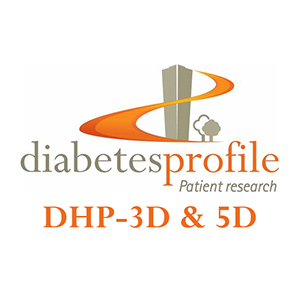The DHP-3D and DHP-5D are diabetes-specific preference-based measures, that consist of:-
1) a descriptive system that is used to assign each respondent to a health state for each time point; and
2) utility scoring weights that have been generated using preferences of the UK general population.
The DHP-3D has 3 dimensions:
1) Mood/ psychological distress
2) Eating
3) Social limitations/ barriers to activity
Whereas the DHP-5D has 5 dimensions:
1) Mood
2) Eating
3) Social Limitations
4) Hypoglycaemic attacks
5) Vitality
The generated utility weights are then embedded into short programme files to be used with common data analysis packages SPSS or STATA.
^ Back to top


